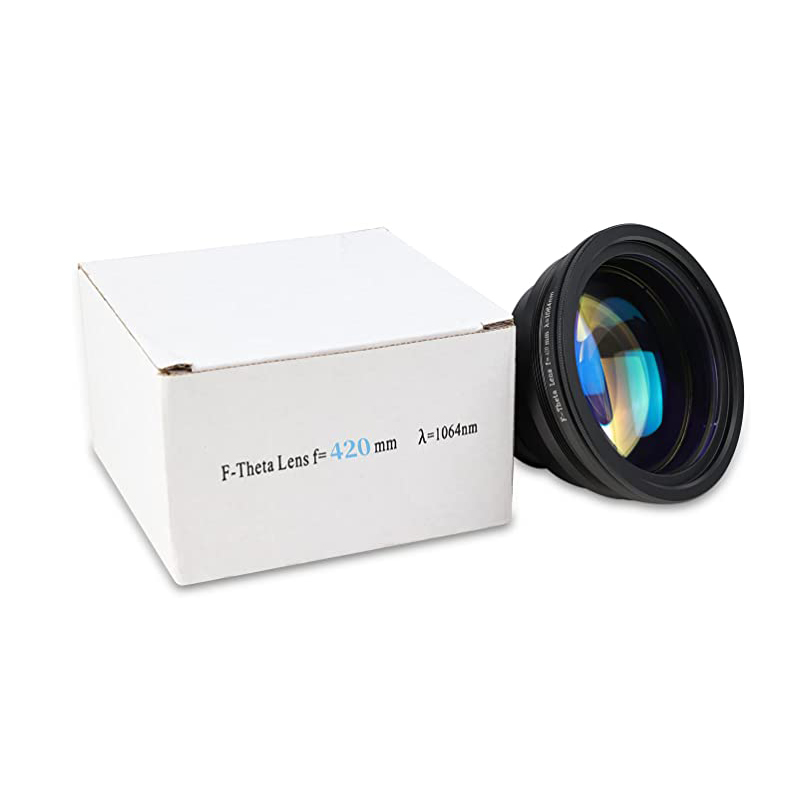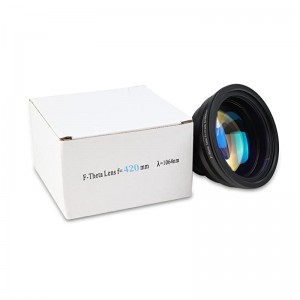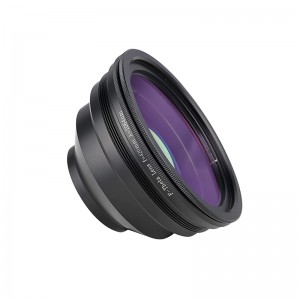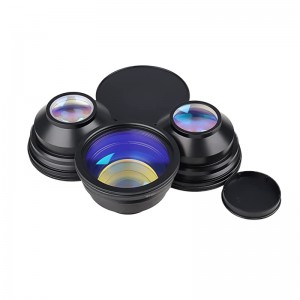1064nm F-Theta Focusing Lens for Laser Marking

Features
1.Scan Field
The bigger field that the lens scans, the more popular the f-theta lens is. But too big scan field may cause many problems, such as big beam spot and deviation.
2.Focal length
Focal length (it has something to with f-theta lens working distance, but not equal to working distance).
a. Scan field is proportional to the focal length-bigger scan field will inevitably lead to longer working distance, which means more laser energy consumption.
b. The diameter of focused beam is proportional to the focal length, which means that when the scanning field increase to certain extent, the diameter is very big. The laser beam is not focused well, the laser energy density decreases badly ( the density is inversely proportional to the square of diameter) and cannot process well.
c. The longer the focal length is, the bigger the deviation is.

Parameters
|
No. |
EFL (mm) |
Scan Angle (±°) |
Scan field (mm) |
Max. Ent pupil (mm) |
Length (mm) |
Working Distance (mm) |
Wavelength (nm) |
Spot Diagram (um) |
Thread (mm) |
|
1064-60-100 |
100 |
28 |
60*60 |
12 (10) |
51.2*88 |
100 |
1064nm |
10 |
M85*1 |
|
1064-70-100 |
100 |
28 |
70*70 |
12 (10) |
52*88 |
115.5 |
1064nm |
10 |
M85*1 |
|
1064-110-160 |
160 |
28 |
110*110 |
12 (10) |
51.2*88 |
170 |
1064nm |
20 |
M85*1 |
|
1064-110-160B |
160 |
28 |
110*110 |
12 (10) |
49*88 |
170 |
1064nm |
20 |
M85*1 |
|
1064-150-210 |
210 |
28 |
150*150 |
12 (10) |
48.7*88 |
239 |
1064nm |
25 |
M85*1 |
|
1064-175-254 |
254 |
28 |
175*175 |
12 (10) |
49.5*88 |
296.5 |
1064nm |
30 |
M85*1 |
|
1064-200-290 |
290 |
28 |
200*200 |
12 (10) |
49.5*88 |
311.4 |
1064nm |
32 |
M85*1 |
|
1064-220-330 |
330 |
25 |
220*220 |
12 (10) |
43*88 |
356.5 |
1064nm |
35 |
M85*1 |
|
1064-220-330 (L) |
330 |
25 |
220*220 |
18 (10) |
49.5*108 |
356.6 |
1064nm |
35 |
M85*1 |
|
1064-300-430 |
430 |
28 |
300*300 |
12 (10) |
47.7*88 |
462.5 |
1064nm |
45 |
M85*1 |
|
1064-300-430 (L) |
430 |
28 |
300*300 |
18 (10) |
53.7*108 |
462.5 |
1064nm |
45 |
M85*1 |





